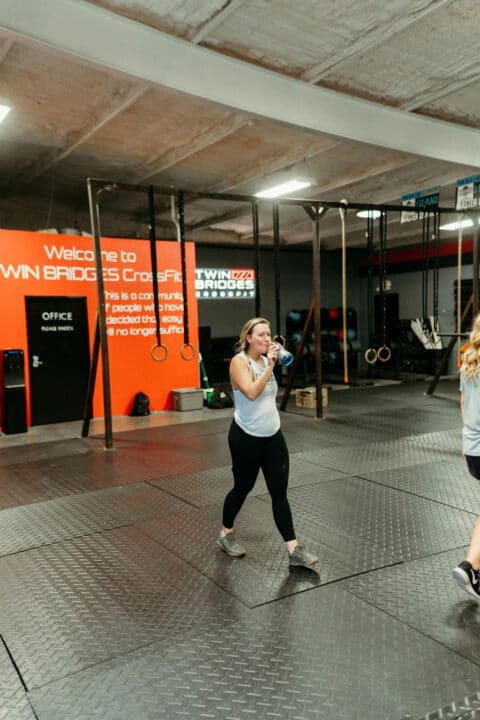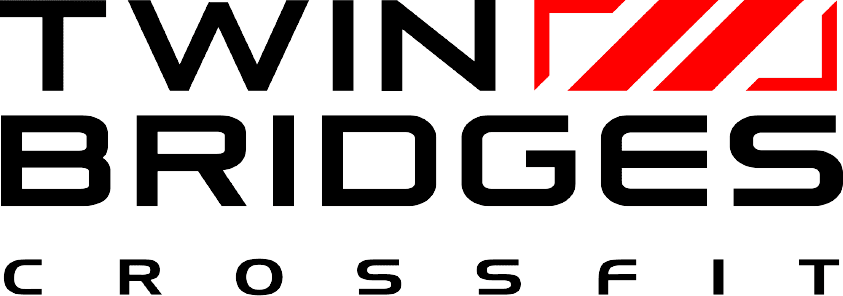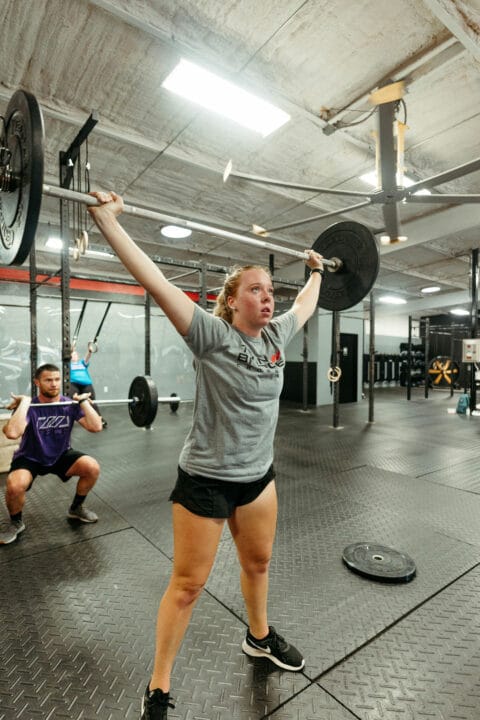Maybe the most important concept to understand for maximizing your performance and staying injury free in the gym is midline stability. You’ve probably heard us use the term midline stability or talk about “your midline” but might have wondered what that meant, exactly.
First, it’s important to understand what we mean when we refer to your midline. Core is a related term but focuses specifically on the muscles that wrap around your spine. Your midline is the entirety of your spine from your neck down through your hips.
Maintaining a stable midline means holding our hip and spine locked together while we move through a particular range of motion.
As coaches, we can spot proper midline stability (or lack of) in every movement in the gym. Does an athlete’s back round during a deadlift or while rowing? They’ve lost their midline. Do they arch their back too much when pressing overhead? They’ve lost their midline. Do their feet come too far back during kipping pull-ups? Yep, they’ve lost their midline.
As an athlete it’s pretty easy to tell if your midline stability isn’t what it should be. Do you notice your lower back hurts more than it should the morning after you’ve done certain movements? That’s a good sign your spine and your hips aren’t working together like they should.
Remember, pain is a lagging indicator. If you’ve got pain somewhere, it’s very likely being caused by a movement deficiency.
Developing and maintaining good midline stability is vital to staying safe in the gym, and learning to properly breathe and brace is an absolutely essential part of the process. This is why at TBCF we always strongly recommend our athletes not use weight belts unless they’re very experienced and already understand proper bracing.
The danger is that by relying on a weight belt too early in our athletic development we risk not learning to brace properly, which will greatly increase the risk of injury down the road. We encourage even experienced athletes to not use belts–we don’t want them to become a crutch that causes our midline stability to wane. If we’re breathing and bracing properly, we shouldn’t need extra supportive equipment unless and until the weights get very heavy.
Our focus on building midline stability in TBCF athletes is one of the reasons we focus on holding positions so often. These isometric contractions are outstanding for developing control and stability. All the paused back squats we’ve been doing lately? Those aren’t just to torture you…they’re to make sure your midlines are working the right way.

Our intense focus on proper hinging patterns in everything we do is another way we make sure your spines and hips are working together.
Hopefully now you understand a little more about why it’s so important to focus on making sure your body is moving the way it should and can.
At Twin Bridges, our focus will always be on the quality of your movement first. I don’t care what weight you have on the bar until I’m first satisfied that your mechanics are sound. The athlete who is patient and understands that sustainable gains in strength and performance come gradually and with proper mechanics is setting themselves up for a long road of success.
About the Author
Edward Getterman is a Certified CrossFit Trainer (CF-L3) and the owner of Twin Bridges CrossFit in Waco, Texas. If he can’t be at the gym or at home, he’d prefer to be at Walt Disney World. He loves deadlifts, hates running, and believes above all else that CrossFit is for everyone.

